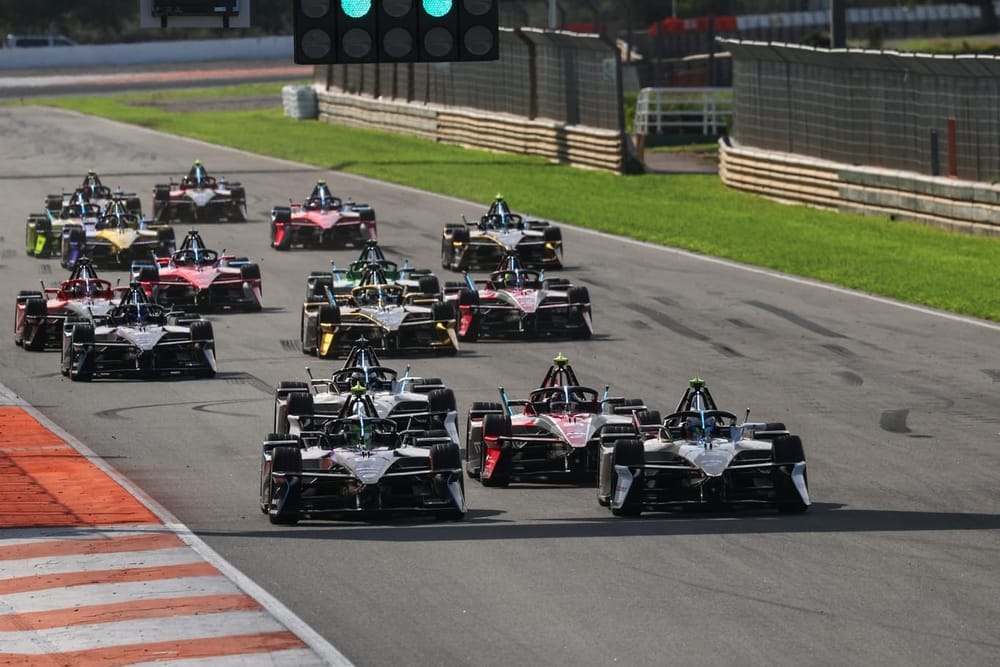Formula E's Valencia testing days are done, with a month's break now ahead of the final season of the Gen3 ruleset and what could prove to be its closest campaign to date.
The grid might be down to 20 cars for the first time since 2018, after McLaren's exit in the summer, but with some key big driver seat switches, the return of Citroen to international motorsport, and exciting rookies arriving in the paddock, one thing there won't be is a lack of action or intrigue.
Here's what we learned from the four-day collective test:
Formula E's tightest season incoming?
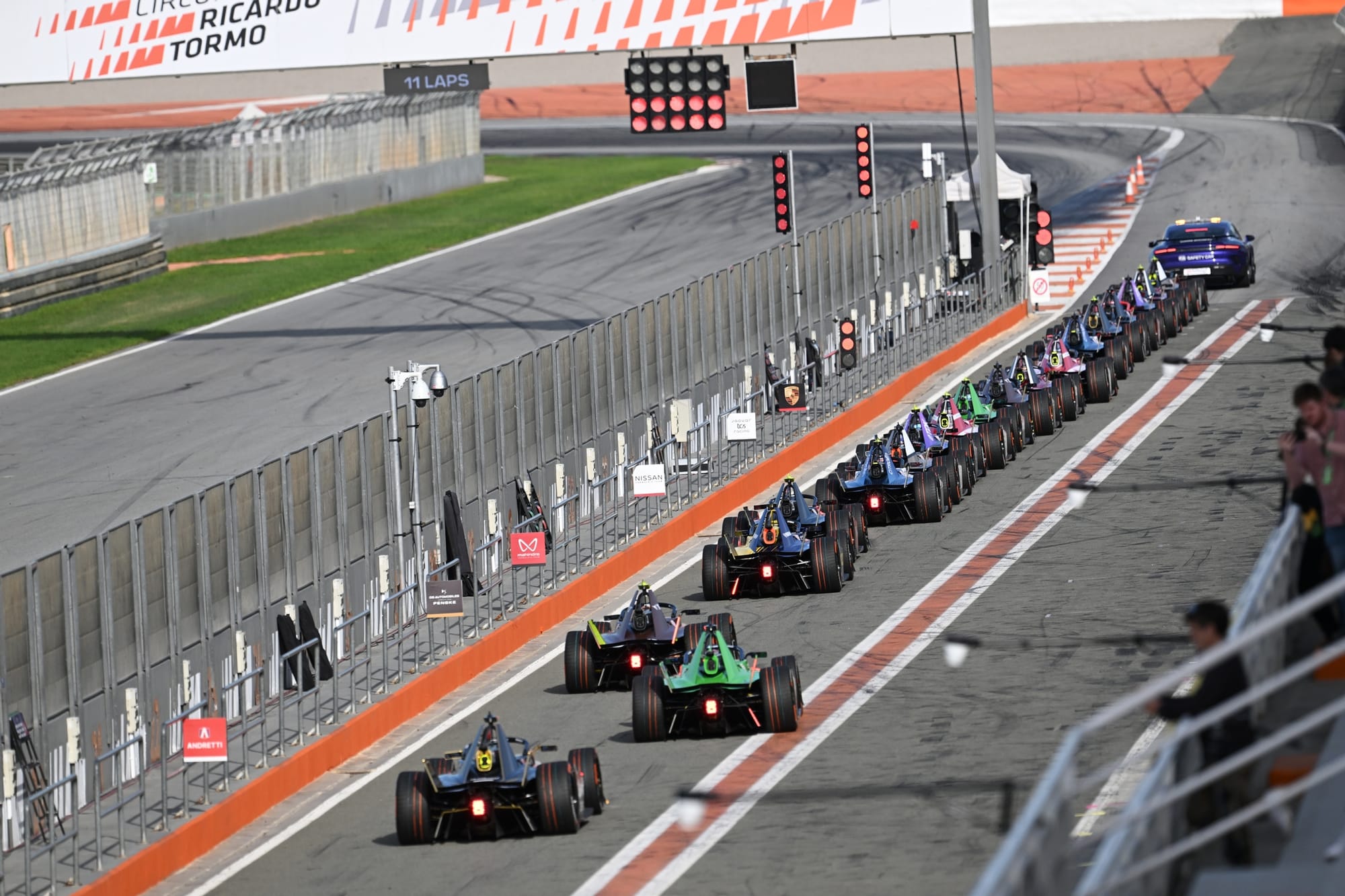
The final season of the initially troubled, now-settled Gen3 ruleset was always going to have the grid in its most compact state yet. But that doesn’t mean everything about the car, the tyres and the powertrains has been squeezed completely dry.
Incremental upgrades, however minuscule, will be absorbed and applied after a significant 18 hours of running and 5446 total laps, completed during six sessions spread across four days earlier this week.
Just 0.106 seconds covered the six fastest drivers across the week and reigning champion Oliver Rowland in second, Taylor Barnard in third and Norman Nato in fourth had a mere 0.004s between them. The entire field of 20 drivers were separated by just 0.825s.
Generally, most of the teams appear to have improved on areas such as powertrain oscillations and also rotation of their cars in cornering. But the one huge takeaway when The Race went briefly trackside at the Turns 2, 3, 4 and 5 complex last Tuesday is that the Mahindra was visibly more planted at the rear than its rivals and is much improved also on its shift-torquing performance.
Fundamentally, the form guide at Valencia is really difficult to gauge because the circuit is not used for Formula E racing, it has a benign macro surface, and also extrapolating both 300kW and 350kW runs can only produce a hierarchy of sorts because of unknown tyre choices.
That said, Mahindra's work over race sim programmes was very strong indeed and an air of confidence is permeating from the team once again.
If we were to draw an order of teams based on what we saw across different runs and conditions last week it feels like Mahindra, Nissan and Porsche were ahead, with Jaguar, the Stellantis cars (DS Penske and Citroen) and Lola coming next. The Andretti, Envision and Cupra Kiro entries are somewhere within the second group on 350kW power but are harder to appraise as a whole because they each have drivers with either little, no or sporadic experience.
Being definitive is also difficult because on a race weekend the teams and drivers are limited on push laps at 350kW (it is available in the qualifying duels and for a handful of laps in attack mode) whereas at Valencia there are no such restrictions with so much running and teams can optimise every system to a large degree.
Competitors can also choose to use the tyres in the most optimal Valencia scenario over and over again rather than recreate what a race weekend would be like. That is why reading too much into what was seen last weekend is largely futile in the truest sense.
Still, the teams are constantly finding out about the Hankook tyres that go into their second season of the current spec.
"We're still learning a lot about the tyres," DS Penske’s Phil Charles told The Race.
"Then there are little bits on the systems side, and the braking in these cars is super, super important, as the driver's confidence and approach to a race weekend is all linked to the braking, so you are constantly trying to improve on that.
"Overall, it's little, tiny adjustments - little bits of mapping, little bits of tuning of the system - that we are working on all the time."
Session leaders
Session 1 (Monday): Pascal Wehrlein (Porsche)
Session 2 (Tuesday): Edoardo Mortara (Mahindra)
Session 3 (Tuesday): Dan Ticktum (Cupra Kiro)
Session 4 (Wednesday): Mortara
Session 5 (Thursday): Norman Nato (Nissan)
Session 6 (Thursday): Oliver Rowland (Nissan)
Mahindra can be a title contender
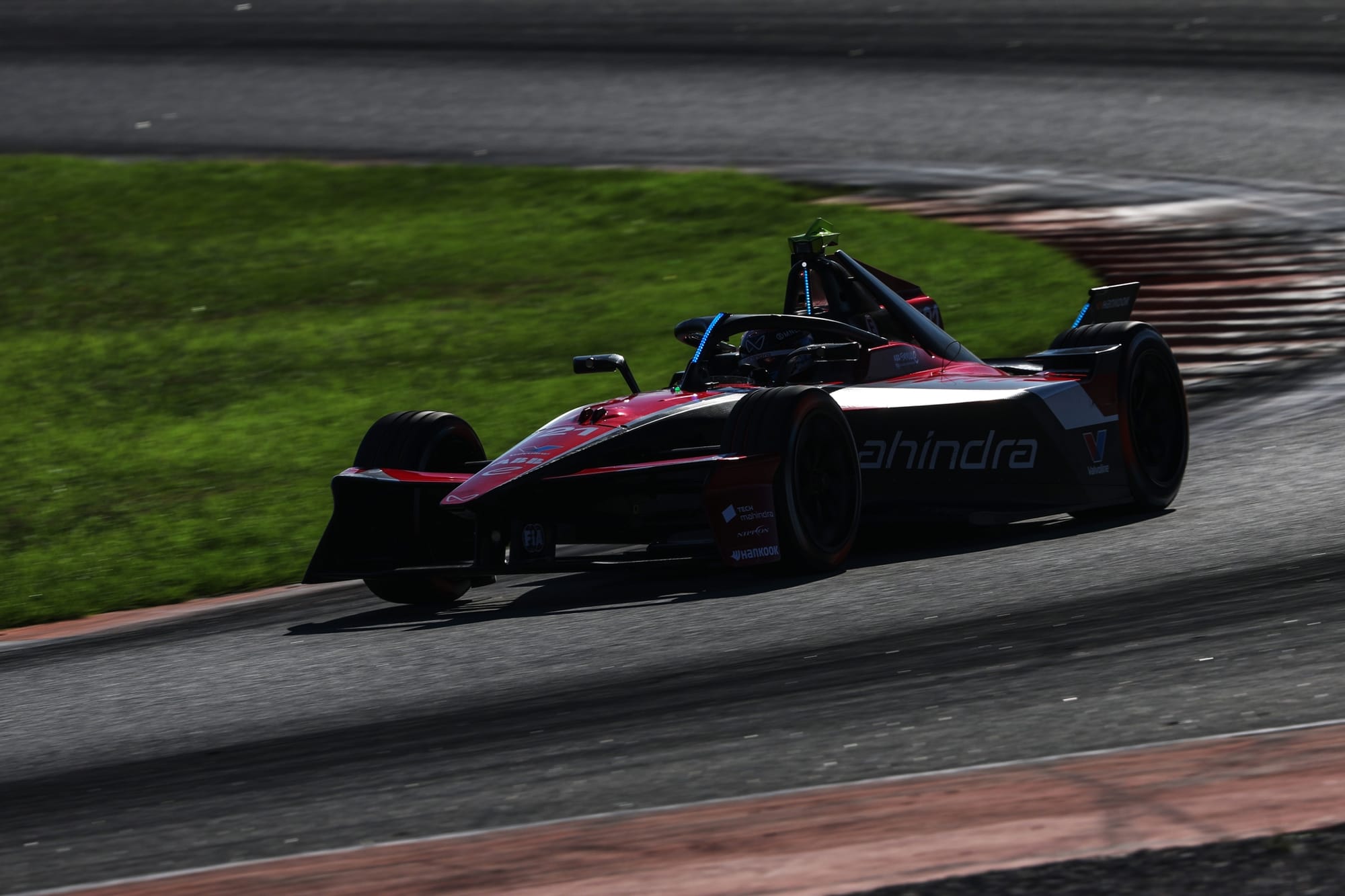
So, Mahindra had a very strong test, just as it had a very strong 2024-25 season - one in which it took fourth place overall behind Porsche, Jaguar and Nissan.
This is a team on the up at the moment and it was underscored by both Edoardo Mortara and Nyck de Vries having some impressive 300kW and 350kW runs.
The aforementioned strong rear-end stability and capacity to absolutely hammer the first sector at the Circuit Ricardo Tormo had even some pursuing rivals purring.
It seems at this point unfathomable that Mahindra won't quench its near four-and-a-half-year victory thirst (since Alex Lynn won in London in July 2021) this coming season. Mortara and De Vries are serial race winners and hungry to get back on the top step. With the improvements made now, the big question is if the occasional win can be turned into a bona fide title challenge.
This is of course being dampened down externally by Mahindra team principal Frederic Bertrand, who has presided over a period in which Mahindra was a candidate for the wooden spoon in 2023 yet could be a title challenger just over two years later.
"If you look in the past, some of our teams and drivers that were dominating [the tests] didn't win the championship afterwards," Bertrand told The Race.
"So, no conclusion. The only thing I would like is that people keep two feet on earth. Because even if the laptimes look good, there are plenty of things which are not good, so we have a lot to do to make sure that we execute better, that we understand all the small details where the data was not exactly the one we wanted to have.
"Hopefully we come with a package which puts us from the beginning able to go into points again. And with points, then maybe we get to good podiums.
"One thing we would love is to have a win. That's definitely the thing. But nothing we can conclude from here."
Nissan's curious week
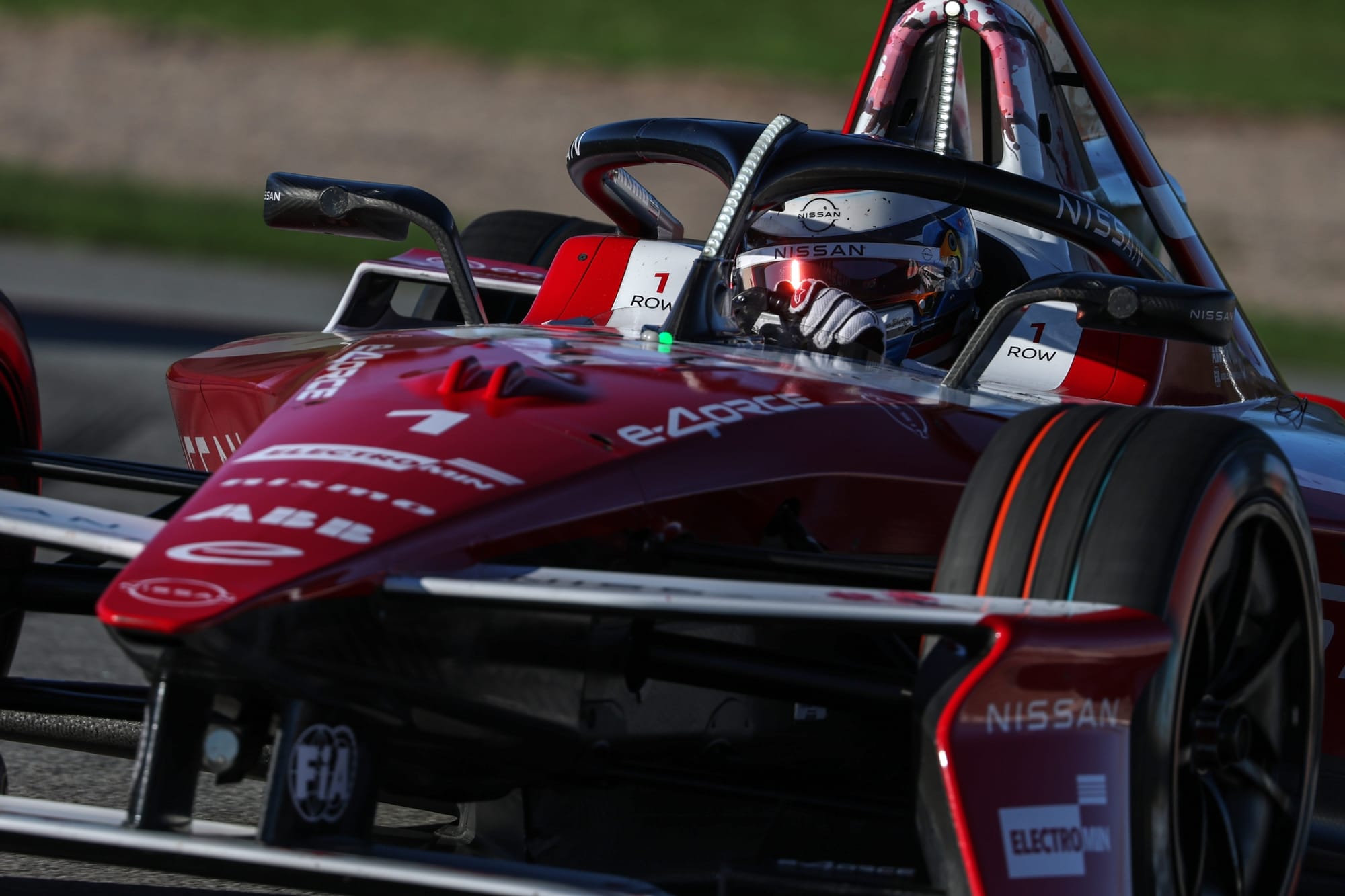
Nissan was top dog for half of last season but it ended disappointingly with a slump that meant it went from top of the teams' standings to wheezing its way to a distant third (and almost within reach of Mahindra).
This week's test started out strangely, with both Nissans of Rowland and Nato barely featuring on the timing screens and then propping them up on Tuesday afternoon completely.
Running to specific staccato programmes, it was impossible to gauge where they were - particularly on 350kW runs, which they did very few of at this stage of the test.
Rowland stopped his car on Monday afternoon when he heard strange noises from his Nissan and came to a halt as a precaution on track. The Race understands that this was later identified as a suspension issue.
Overall, defending champion Rowland believed there was some relevance in running at Valencia and potentially some that could be transposed to other tracks too.
"What we can learn here may work at some tracks; maybe Jeddah or Shanghai, it could be quite useful," he told The Race.
“It's a similar type of grip level and corner speed stuff and we do have some systems and software stuff that we can finalise here and take forward into the season.
"To be honest, we have a couple of days' worth of running that's going to be valuable for us moving forward, and a couple of areas that we've improved over the off season."
Nato was right on pace in the Wednesday and Thursday sessions and looked at ease after a difficult campaign last season - where his points-collecting capacity was compromised by a mix of team and driver challenges.
Then, in the final session Rowland and Nato smashed in some quick laps to end up first and fourth respectively, to ensure they head to Sao Paulo, a track they should have had a 1-2 at last December, among the favourites (and with a chance to lay that particular ghost to rest).
Rookies slowly find their grooves
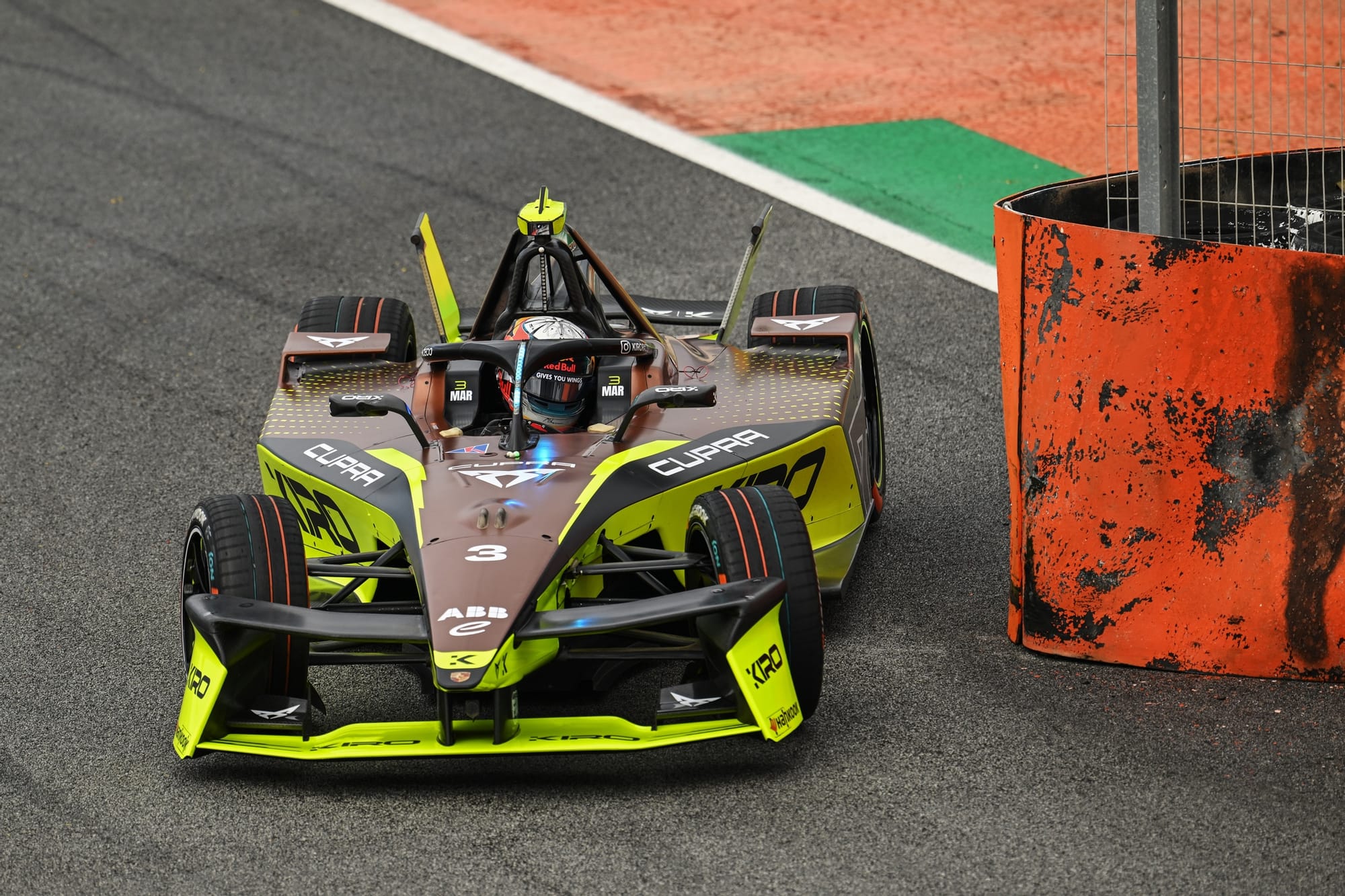
Although Pepe Marti is the only genuine rookie, both Felipe Drugovich at Andretti and Joel Eriksson get special dispensation as the former has just two E-Prixs under his belt and Eriksson's Formula E career has been particularly staggered.
Marti was the standout in the context of having very limited preparation and no track running whatsoever prior to Valencia.
A brush with the chicane wall in Tuesday's 'race' apart, Marti was impressive in both power modes, peaking on a best lap of 1m21.708s that was just 0.017s off Kiro team-mate Dan Ticktum’s fastest effort.
"He's settled into the team super quickly," new Kiro team principal Russell O'Hagan told The Race. "His working approach is very good, he's likeable and he's very smart, easy-going but very dedicated.
"The performance has been pretty good and we saw some encouraging laptimes on 300kW and he was good in damp conditions, which is a good sign of a driver getting on top of the car.
"As a team, we have to be patient with him and Pepe has to be patient with himself too. I think we will see it coming together by the time we get to Jeddah [in February] when he gets the first opportunity to rinse and repeat in similar conditions."
New Andretti recruit Drugovich ended the test 15th overall in the times, completing a total of 289 laps. After a brief shakedown at Mallory Park earlier this month that was exactly what was needed and the fact he ultimately set a time just over two tenths off team-mate Jake Dennis was a decent start.
"He's chipped away at it but he's frustrated a little still but there were a lot of positives this week still," Andretti's Roger Griffiths told The Race.
"He didn't put a foot wrong, didn't go off track but he's a bit disappointed about the outright pace but he’s spent all week learning about the car and the Porsche systems so there is a lot for him to take in.
"As he got more and more familiar with the car and the way the car works, his feedback just got better and better, and he's now able to differentiate between perhaps a conventional race car, like a Formula Two or Formula One car, and the uniqueness of a Formula E car.
"I think it really bodes well for some good results through the season."
Eriksson, who replaced the outgoing Robin Frijns at Envision alongside Sebastien Buemi, concentrated on mileage in the Jaguar-powered car.
He is highly-rated by many at Jaguar, where he was a reserve and development driver for the last three years, and so far he has plugged into the team well.
Eriksson wasn't especially quick and his best lap was eight tenths off the ultimate pace but, from a mileage and knowledge-acquisition standpoint, the team was reasonably happy with his work and the way he conducted his programmes.
Worst-case scenario tested
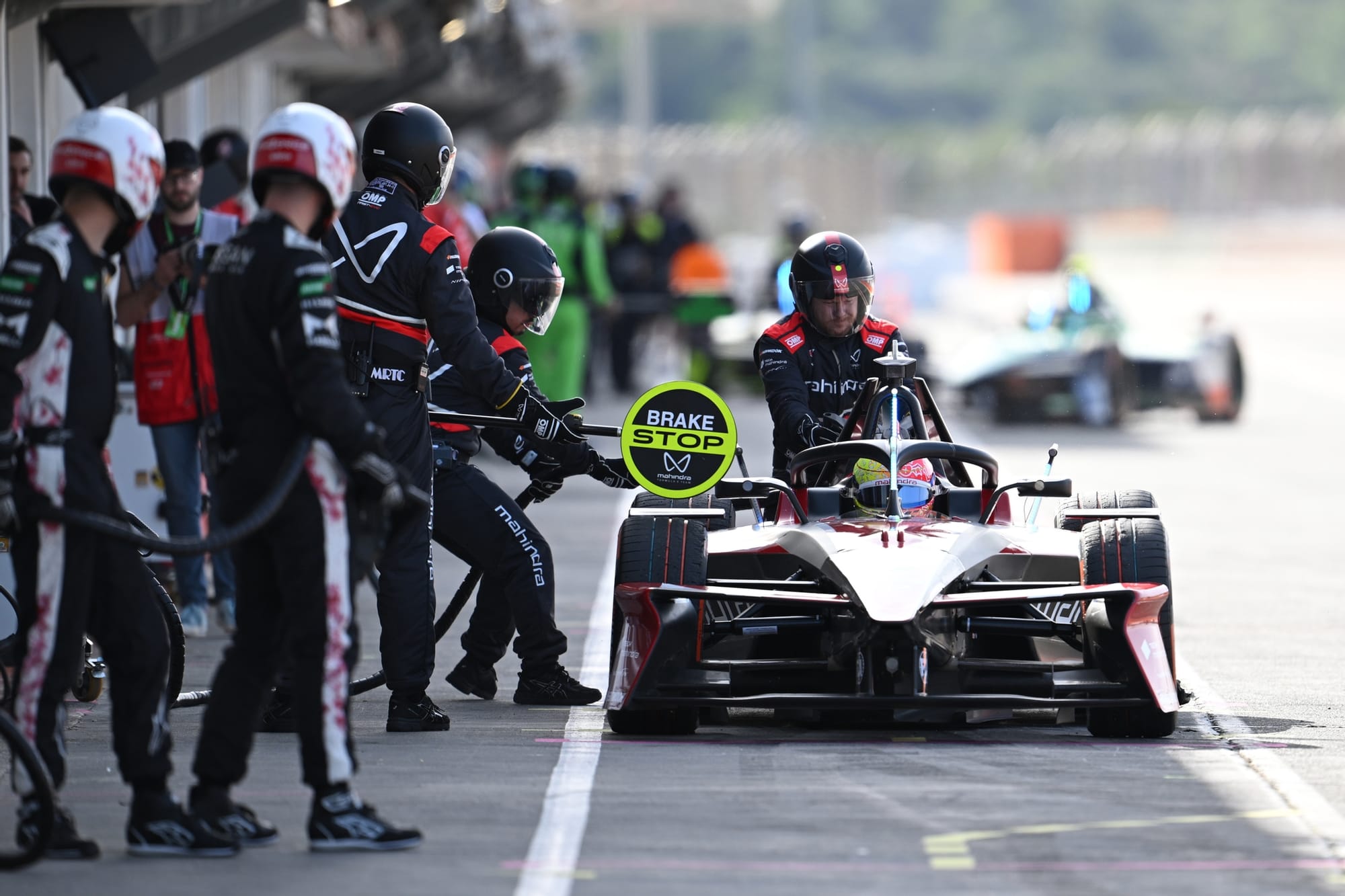
When the Pit Boost era started last February in Jeddah, questions began to crop up in the Sporting Working Group about what would happen if a red flag was issued during a pitstop window.
While it never happened in the real world, the FIA did simulate it in the remote one and, from there, chose to test it at Valencia last Tuesday by issuing a red flag as some cars came into the pitlane to take their mandatory 30-second energy boost pitstop.
From the outside it looked chaotic but the procedures for ensuring that no one was unfairly penalised - either the cars still on track; the cars in the pitlane; those leaving it a lap down; or the cars entering the pitlane - when the grid was formed for the restart.
FIA officials, including race director Marek Hanaczewski and Pablo Martino, head of championship for Formula E, were involved in the subsequent reshuffling of the pack.
The restart order was given around 12 minutes after the red flag was shown; that included the time of both rewinding the race when it was stopped and ascertaining where those that were entering or leaving the pits should rejoin the race from.
There were certainly things that went wrong, including some cars being penalised for being 10 car lengths away from the safety car, when there were in fact two distinct groups of cars circulating.
In addition to the procedural simulations, the race director also triggered a rare pack-up of the cars - bunching them up more - under full course yellow.
"It [a red flag] is probably one of the most disturbing situations on track or in a race, so the idea was precisely to replicate that scenario so everybody could take over many conclusions and make mistakes eventually on all the processes followed on that part of the event," Martino told The Race.
"We did it during the Pit Boost window, when we had cars on track and cars in the pitlane, on purpose. It creates a lot of different scenarios between the different positions of the car on track at that moment - cars in the pitlane, cars performing a Pit Boost, cars on track - potentially they have done, potentially they don't.
"So that's what we tried to replicate in order to make everybody aware of what the processes are.
"Apart from some takeovers on the team side and in FIA side it worked pretty well and people understood perfectly what was the restart order, what is the restart process and to make everything more efficient and try to consume as less time as possible on a race suspension.
That race was 'won' by Porsche's Nico Mueller who inherited first place after Mortara, who took the chequered flag first, was one of those penalised for not being 10 car lengths away under the safety car.
The four days of running was remarkably incident-free, with only Barnard having a red-flag-inducing incident in his DS Penske after a failure on his car on Monday afternoon.


